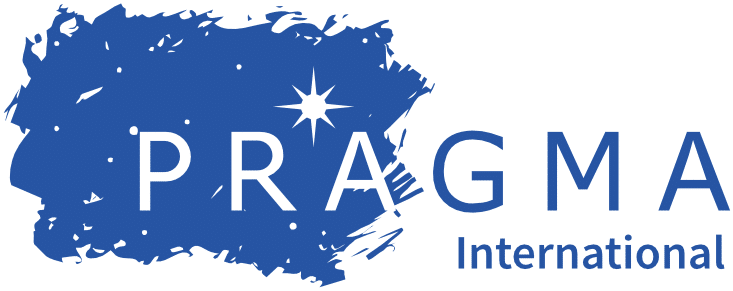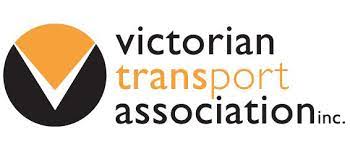Australia and New Zealand’s food and supplement industry only has until 6pm AEDT on 9 March 2023 to respond to Food Standards Australia New Zealand’s call for submissions in its review of how the law regulates “formulated supplementary sports foods” (Proposal P1010 – Formulated Supplementary Sports Foods).[1] While at first glance this may appear to be a niche regulatory issue, the current Call for Submissions asks big questions that go well beyond the regulation of sports foods, such that the entire food and supplements industry in Australia ought to stand up, take notice, and put in a submission. Any change to this single regulatory category can have far-reaching consequences to the innovation and marketing of healthy food products allowed to be sold in Australia (and to a lesser extent in New Zealand).
What is a “formulated supplementary sports food”?
Section 1.1.2-2 of the Australia New Zealand Food Standards Code (the Food Standards Code) defines a formulated supplementary sports food (a sports food) as “a product that is specifically formulated to assist sports people in achieving specific nutritional or performance goals.”
This definition is completely different to the definition of a “sports drink” in the Country of Origin Food Labelling Information Standard. In fact, the Australian Competition and Consumer Commission has provided guidance that beverages that meet the Foods Standards Code definition of a “sports food” are excluded from the Country of Origin definition of a “sports drink”. Why? Good question. However, this non-sensical conflict of regulatory definitions is probably best left for another article.
This article focuses solely on the Food Standards Code category of sports foods, and how that category could change for the worse if industry stakeholders do not become vocal.
The Food Standards Code regulatory category of sports foods includes specific sub-categories of product for high carbohydrate supplement, protein energy supplement, and a simple energy supplement. These additional sub-categories of sports food (if they meet the relevant nutritional criteria) are expressly permitted to make additional health claims, such as may be “useful before, during or after sustained strenuous exercise”.[2]
Somewhat frustratingly however, any sports food that does not fit into one of those three precise sub-categories is expressly prohibited from even implying that the product may lead to “enhanced performance or beneficial physiological effects”. That’s right. A regulatory product specifically designed to assist sports people in achieving specific performance goals is not allowed to even imply that it actually can do what it is legally required to do.
When Food Standards Australia New Zealand (FSANZ) introduced a previous Proposal P1030 way back in February 2014 (following a previously abandoned review of sports foods in 2001), FSANZ recognised the restriction on health claims on sports food as being an “anomaly” and stated that the purpose of P1030 was to:
permit sports foods to carry health claims about physical performance and sport-related beneficial physiological effects and to enable electrolyte drinks to make self-substantiated health claims beyond current limited permissions. [Emphasis added][3]
Importantly – unlike many other regulatory categories of food – sports foods have a wide range of permissions to be fortified with vitamins, minerals and amino acids and have very few minimum or maximum compositional thresholds. In other words, it is currently very easy for a food product to define itself as a sports food. For example, it is currently prohibited to add Vitamin B12 or taurine to a salami. But you could re-classify your salami as a “sports food” under the Food Standards Code, then compliantly add those two nutrients, and market it in gyms as a “sports salami”.
Why have sports foods become so important?
Since 2004, it has been the policy of the Food Regulation Ministerial Council (made up of Ministers for health, primary production and agriculture across Australia and New Zealand) to only permit fortification of food products with vitamins and minerals in the following circumstances:
- Where there is a need for increasing the intake of a vitamin or mineral in one or more population groups demonstrated by actual clinical or subclinical evidence of deficiency or by data indicating low levels of intake; or
- Where data indicates that deficiencies in the intake of a vitamin or mineral in one or more population groups are likely to develop because of changes taking place in food habits; or
- Where there is generally accepted scientific evidence that an increase in the intake of a vitamin and/or mineral can deliver a health benefit; or
- To enable the nutritional profile of foods to be maintained at pre-processing levels as far as possible after processing (through modified restoration2 ); or
- To enable the nutritional profile of specific substitute foods to be aligned with the primary food (through nutritional equivalence).[4]
This Policy was clarified in 2015 as follows:
The intent of the Policy Guideline for the Fortification of Food with Vitamins and Minerals is to not permit voluntary fortification of a food category, or products within a food category, that are high in salt, sugar or fat, or foods with little or no nutritional value. FSANZ should use recognised nutrition profiling tools and initiatives that are capable of identifying foods that are high in salt, sugar or fat, or little or no nutritional value, to determine which foods are appropriate for fortification.[5]
It ought to be fairly easy to prove that an increase in a vitamin or mineral could deliver a health benefit. The Food Standards Code already includes a tool to distinguish between foods with perceived nutritional value (namely, the Nutrient Profiling Scoring Criterion (NPSC) used to determine which foods can make health claims or not). Therefore, regulation whereby any food that meets the NPSC can be fortified with any vitamin or mineral that can safely deliver a health benefit would appear to align with this policy.
However, the Food Standards Code currently imposes regulations that are the opposite of such an approach.
Section 1.1.1-10 prohibits the addition of any isolated vitamin and mineral to any category of food except those categories with express permission. As a result of this prohibitive restriction on vitamin and mineral fortification, many developers and importers of healthier food products have found that the only regulatory category that allows their product to reach the Australian market is sports food, regardless as to whether it was designed for athletic performance or not. This has naturally led to a proliferation of products classified as sports food.
It is worth noting that this restriction on fortification is more of an issue in Australia than in New Zealand. New Zealand has sensibly created a new regulatory category that allows the fortification of food with vitamins and minerals almost without restriction so long as the end product is safe; namely “supplemented foods”. It is likely that many supplemented foods sold in New Zealand could only be made in Australia – if at all – if classified as a sports food.
What risks and opportunities are there in responding to the FSANZ Call for Submissions?
While there are many issues plaguing sports foods that could benefit from better or clearer regulation, the Australian food industry ought to be deeply concerned that this review process could further limit the opportunities to provide innovative and healthier food products to the market. FSANZ appears aware of this, as it poses the following question:
Would a tiered approach to regulation based on composition improve public health and safety for consumers, while allowing for innovation (e.g. provisions for ‘high risk’ substances, restriction on sale, differing labelling requirements or compositional deviation)? If so, how could it look? How could high, medium and low risk products be differentiated? What requirements could apply to each and why (e.g. pre-market assessment, compositional and labelling requirements)?
If nothing else, the entire food industry ought to respond to this question (which is not related to sports food in any way). This question hints at a regulatory utopia where healthier and innovative food products would actually be allowed to reach Australian consumers.
For example, sports food products are currently banned from containing isolated caffeine. However, given caffeine’s value as a stimulant to athletes, many sports food products contain caffeine naturally through food ingredients like guarana. Given that there are overall caffeine restrictions imposed on all foods regardless of source to protect consumer safety, why are sports foods only allowed to contain caffeine from food ingredients and not isolated caffeine? This arbitrary distinction makes no sense and in no way protects public health and safety.
It is worth noting that this current call for submissions has been flagged as the first of two rounds of consultation. This first call will focus on compositional issues and mandatory labelling, while a second call for submissions will target the health claims “anomaly”. That said, this current call for submissions does expressly ask for comment in relation to health claims and marketing of sports foods:
To inform the scope of the second consultation paper, do you have any views on how Standard 1.2.7 – Nutrition, health and related claims could apply to sports foods?
Either the restrictions on vitamin and mineral fortifications need to be eased or the restrictions on health claims on sports foods needs to be removed. Having both in place needlessly stifles innovation while pushing food manufacturers to classify simple food products as sports foods.
The danger of industry not contributing to this Call for Submissions is that FSANZ could end up narrowing the application of sports foods to, well, actual sports foods but without opening up safe and appropriate pathways for vitamin and mineral fortification.
Footnotes:
[1] Proposal P1010 – Formulated Supplementary Sports Foods
[2] See for example Section 2.9.4-8 of the Food Standards Code.
[3] Proposal P1030 – February 2014
[4] Policy Guideline – Fortification of Food With Vitamins & Minerals
[5] Policy clarification statement to be read with the policy guideline ‐ November, 2015








